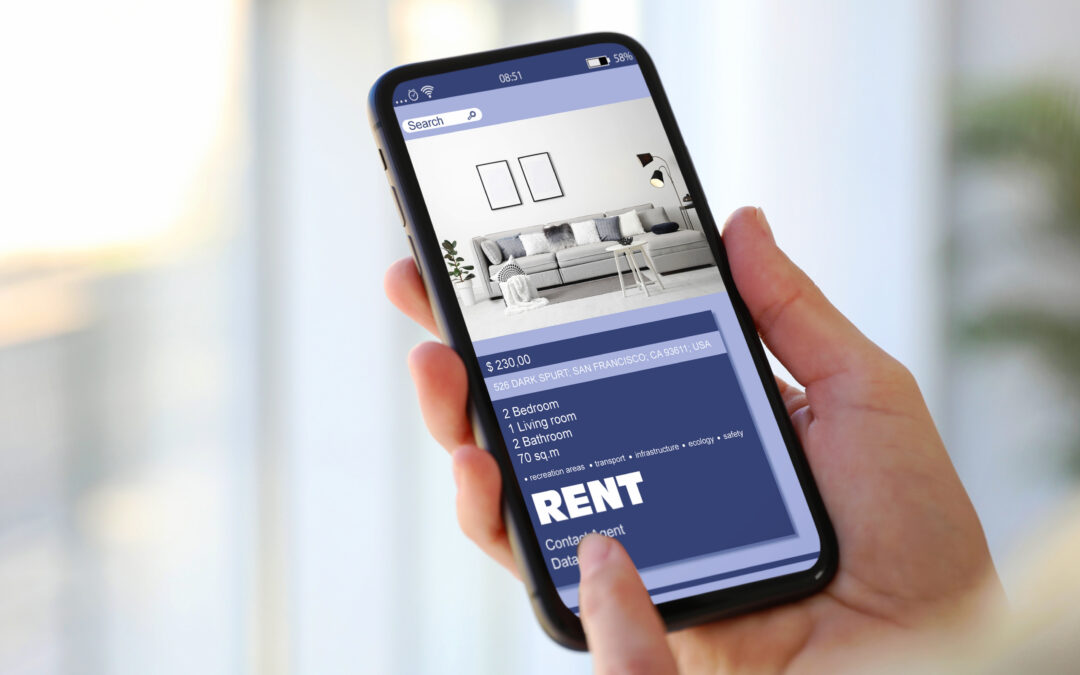
by threshold | Oct 26, 2021 | Digital Marketing, General, Marketing, Tech/Web
The housing market can be a difficult place for Class C and D properties. With older construction, less flashy amenities, and less affluent neighborhoods with fewer public services and attractions, Class C and D properties can struggle to appeal to prospective renters. And with plenty of new developments filling out the ranks of A- and B-Class properties, the competition can seem especially stiff.
But the truth is, there’s a market for C- and D-Class communities; the challenge simply lies in figuring out how to tap into it. From our years of experience in apartment marketing across a variety of property classes, we’ve never met a community we couldn’t connect with the right audience, even amid waves of new starts offering additional competition. If you have a C- or D-Class property you’re struggling to market effectively, here are our top four tips toward better apartment marketing results.
Understand Your Audience
If you’re asking yourself why anyone would choose to live at a C- or D-Class property when there are so many A- and B-Class communities out there, you may be overlooking entire sections of the American renter audience. Understanding who your audience is and what motivates them is the first step to a successful real estate marketing strategy.
Start by letting go of your assumptions. Although you may be starting with some good ideas, it’s also important to overcome any potential bias you may have about your audience, especially if you’ve never lived in a C- or D-Class apartment community yourself and therefore lack this insider perspective.
Instead of operating on your own assumptions, it’s time to do some research. First and foremost, get out there and ask actual people what motivates them when choosing where to live. Conducting quick surveys on the street in the neighborhood surrounding your community is an excellent place to start. If you have trouble finding participants, offering to enter people into a drawing for a prize can help overcome this hurdle. You can also send surveys online, gathering responses through services like Survey Monkey or Qualtrics.

In addition to this on-the-ground research, research the demographic and sociographic information of your neighborhood. You might be surprised how much information you can find for free online. One tool we often use is the ESRI Tapestry Segmentation profiles, which provides demographic and sociographic info for over 60 different audience segments in the US. ESRI also has an in-browser Know Your Neighborhood app which allows you to look up audience segmentation info by zip code (scroll down and click “Explore Your Zip Code”).
Don’t Be Afraid of the Word “Affordable”
Now that you’ve ditched your biases in favor of a data-driven approach, it’s time to overcome another common instinct we tend to see among apartment marketers, owners, and property managers. If you’re afraid of the word “affordable,” you’re far from alone. But avoiding this term doesn’t serve you or your audience.
The truth is, one of the primary reasons some residents are drawn to Class C and Class D communities is because they know they’ll get a better deal that suits their budget. For many, cutting-edge amenities and brand new interiors are simply out of their price range, or they’d prefer to save the extra money they’d otherwise spend on these nice-to-haves and instead focus on the essentials. Don’t snub this audience by avoiding terms like “cheap” and “affordable” like they are dirty words. In nearly every market, keyword research shows that search terms including the words “cheap,” “affordable,” and “low cost” get plenty of search volume, revealing just how many are interested in precisely that. By including these words in your website and ad copy, you help this audience weed out the communities that don’t fit their needs and find a community that is perfect for them—namely, yours.
Just in case you still have some hesitation, consider this: There certainly are those for whom “cheap” and “affordable” carry negative connotations. Some prospects will indeed see those terms and use that as a reason to not click on your ad or your website. But this is actually a good thing. The more you qualify your audience by connecting with people who actually want what you offer, the less time, energy, and money you waste on prospects who are more likely to look elsewhere.

Show Your Online Reputation Some Love
Class C and D properties tend to be on the older side, which means you’ve had plenty of time to accumulate reviews—and we all know people are more likely to leave a review when angry than when they’re satisfied. Plus, older communities tend to face added maintenance challenges, which are common catalysts for negative online reviews, even if those challenges are resolved later. Not only that, but for Class C and D properties who are in neighborhoods that enjoy less financial stability and less access to public services tend to face higher instances of on-site vandalism, theft, and other crimes, which is also a common reason that some upset residents are inspired to take their concerns online.
These overlapping factors can all come together to spell disaster for your online reputation if you’re not careful. But there’s a lot you can do to turn your reputation around and show residents both current and future that you care. To see the tips we’ve compiled from our own Reputation Management experts, check out the posts below.
How To Make Online Property Reviews Work for You
How to Give a Boost to Your Business’ Online Reputation
Enhance Your Online Visibility
Do you have a modern website? Updated Google My Business page? Social media accounts? Active search ads? Just because your building may be older doesn’t mean your marketing tactics have to be. These days, nearly every housing search begins online, so enhancing your online visibility is one of the quickest ways to connect with your audience.
For starters, be sure to keep your Google My Business page up to date. Even if you don’t have a shiny new website with great UX, simply having an up-to-date GMB page with accurate contact information, leasing office hours, and property photos helps make you visible to the wide range of prospects who begin their apartment search on Google.
If you don’t have that shiny new website with great UX we mentioned, it might be time for an update. It doesn’t have to be anything fancy, but an outdated website with broken links and missing information is easy for prospects to spot and likely to disqualify you early on in a prospect’s buyer journey. If building a new website from scratch isn’t in the cards, consider at least creating a single landing page with all your most important information and links to apply online. A single landing page can be cheaper, quicker, and sometimes just as effective as a multi-page website.
Finally, get in front of your audience with strategic ad campaigns. For example, YouTube ads are a great awareness tactic, especially for Gen Z and Millennial prospects. And you don’t have to have stunning photography or videography assets to make them work for you—stock photography and videography, paired with upbeat music and a compelling message can be all you need to make a difference. Geofencing may also be a useful tactic to reach more renters who may already be living or working in your neighborhood and looking for a place to live. And Google Search Ads are a must for driving site traffic and conversions among prospects who are actively searching for housing.

by threshold | Sep 28, 2021 | Creative, Design, General, Marketing, Thought Leadership
 Written by Mike Krankota, Art Director
Written by Mike Krankota, Art Director
There are a lot of elements that go into creating a real estate brand. Everything from voice and tone to visuals like color palettes, shapes, and patterns must be considered in order to develop a coherent brand identity…but in the process of developing a visually striking brand, design efficacy sometimes becomes an afterthought. When this occurs, marketing results suffer, because if your brand doesn’t stand out from the pack, then it doesn’t really matter how pretty it is. In order to stand out, a brand has to not only be eye-catching, but also interesting and memorable against the backdrop of other competitors. As we discuss how to create effective real estate branding, we’ll focus on logo design specifically, but these principles can and should apply to everything from naming to advertising.
Consider brand logos that you’ve encountered and remember. Chances are very likely that it’s not something that looks ‘trendy’ or similar to other brands in its space. The reason it sticks with you? Boldness. For example, consider the candle aisle at your local Target or similar. Can you think of one single brand that has a memorable logo? Not really. They all kind of look the same. It’s either filigree and florals, or stark and modern. “But,” you may be saying, “who cares about the logo, it’s the scent, right?” But when you do see something that stands out for being different, you’re compelled to at least pick that candle up and give it a sniff.

The same applies to your property. Ultimately, a flashy logo design isn’t going to compel potential tenants to live on that property. It’s going to be the interiors, the amenities, the space, the location. So why even care about a big bold brand?
Easy! Because we want to be bold and eye-catching to make that potential renter stop and take a look. We want something that will pique interest and make that person think, “I could see myself living here.” This is doubly true for new construction. When what you have is a construction site and fence wraps, creating an entire vibe with bold branding is extremely important for pre-leasing and lead generation.

Be smart with your logo design as well. The days of just being able to slap some trees flanking “The Oaks at Washington Heights” or whatnot are over. Consumers have become more sophisticated, and demand brands that are tailored to their lifestyle. More to the point: brands that are tailored to their perceived idealized vision of self. It’s always aspirational. This especially plays into the importance of a decision like where a person is going to live. You’re not just selling a place to store your stuff. You’re selling a community. An area. A lifestyle. And overwhelmingly, people want to feel cool and interesting—and to have their home reflect how unique and interesting they feel.
So how do we do that? By embracing the unexpected. Take elements from the location. Consider the design of the property. Analyze the area. Establish the target demographic. And then the key is to execute based on an idealized aspirational vision of that target demographic. For example, a bold brand that targets millennial creatives who want a live/work/play kind of community is very different from a bold brand catering to active adult senior living. But both can be achieved! It all starts by asking the question, “If I were the target resident for this property, what would be a logo that would inspire me to stop and learn more about this cool looking place?”
As you’re considering the answer to this question, don’t fall into the trap of believing everything has to pretty and perfect. Embrace dissonance. Perfectly perfect design is often boring. It’s blandly pretty, with no unique features that create a WOW factor. Imperfections, asymmetricality, bold typographic choices, and even unexpected bursts of color can create a pleasantly dissonant effect that will get your brand described with those words all marketers love to hear: Edgy! Bold! Brash! Unique! Interesting!

Ultimately, the goal is not to blend into the neighborhood. If it was, you could simply put a for rent sign out and not even bother naming the building. Your real goal to stand out. Yes, you want to create something that resonates with the community and the target demographic, but you also want to be a linchpin of that community and not simply a cog. In order to accomplish that goal, it’s important to prioritize bold and impactful design choices over elements that are pretty, but innocuous.

by threshold | Aug 11, 2021 | Creative, Design, General, Marketing, Thought Leadership
 Written by Emily Barker, Graphic Designer
Written by Emily Barker, Graphic Designer
In the midst of the murder of George Floyd and the ensuing protests around the U.S., the design community revived discussions of anti-racism and activism and how it fits into the field of Graphic Design. Just what exactly does designing for social change look like? Specifically in the field of marketing and advertising, the topic of social justice can often feel at odds with the day-to-day worklife in an agency. That’s especially true in the field of real estate–centered design, where the emphasis is often ‘heads-in-beds’ and being 100% leased up, without much room for discussions on equity. However, this sort of all-or-nothing thinking, especially in fields that are complicated, nuanced, and related to issues of housing and equity, can stymie conversations on race and equity before they even get started. The truth is that there are many avenues toward anti-racist marketing while also meeting the needs of clients whose focus is on leads and leases, and real estate designers have a unique position in advocating for those anti-racist strategies.
Creating Historically-Informed Real Estate Design
Anoushka Khandwala in her article entitled “What Does it Mean To Decolonize Design” talks about understanding the schema of one’s own history as a way to re-examine motivations and find new and better modalities of design for the future. She argues that, “With every design choice we make, there’s the potential to not just exclude but to oppress; every design subtly persuades its audience one way or another and every design vocabulary has history and context.”
What can that mean for us as real estate designers? At Threshold we delved into the history of redlining and the Fair Housing Act as a way to better understand the industry and its numerous failures and shortcomings. This meant a combined team of creative and digital staff researched the history of the Fair Housing Act and redlining to create an agency-wide presentation of the history of the Fair Housing Act and red-lining. The creative team made social posts outlining the history of redlining and the creation of the Fair Housing Act during the 1960’s Civil Rights Movement. For more information on redlining and how it denied Black American’s housing and generational wealth in the U.S. please click here.

What this revealed to us was that, as real estate marketers, we had an obligation to help our clients adhere to the FHA rules and regulations. Strictly speaking this meant using photos of diverse individuals in the marketing materials, ensuring that websites were ADA compliant, and using FHA and ADA icons. But it also revealed holes in the system or gray areas where we could advocate for our clients to choose inclusive marketing and branding strategies and also choose to go above and beyond in their digital marketing strategies to prioritize inclusivity.
How Designers Can Be Advocates for Social Change
In Jarrett Fuller’s article on Isometric Studios he describes the studio as one that is “rethinking the way in which designers build a better world”. The founders Andy Chen and Waqas Jawaid describe their clientele as broad: “We’ll take on any kind of client who demonstrates a desire to think about what authentic inclusion looks like, what foregrounding marginalized narratives looks like.” The article goes on to describe the work of Isometric as that of advocates as well as designers.
This is a familiar role for designers as we are already advocating for good design as we talk to our clients about our work and advise them on the best choices for their brand. Isometric Studios would take that same advocacy a step further and challenge the client’s perspective on social issues when needed and advocate for development of brands that support the greater social good. Sometimes this advocacy can look like recommending that a client incorporate people of diverse races in their lifestyle photography or choosing a logo that celebrates the existing community culture where their new development will be built.

One important way to have these conversations with clients is to directly addressing the elephant that is so often in the room: gentrification. By addressing this openly we are better able to advocate for our clients to help them maintain a positive reputation and resident satisfaction. These types of conversations present the opportunity for us to simultaneously advocate for our client and the greater community’s needs by encouraging our clients to create positive connections with their communities.
How do we ask our clients to connect with the communities they will exist in? Here are a few suggestions:
- Hosting events for the neighborhood at the property
- Striking mutually advantageous partnerships with local businesses
- Resident appreciation events that feature goods and services from the local community
- Hiring local instructors to teach fitness, art, or meditation classes
- Hiring local artists to design artwork for the property
- Host a concert of local musicians
- Offer communal spaces to local groups for weekly meetings
- Organize volunteer days with residents or staff in the local community
The point of these conversations and ongoing partnerships with the community isn’t to whitewash the real estate industry, but to offer real-world pathways for community engagement for our clients.
Isometric Studios, in their interview with Jarrett Fuller describes their name’s origin as “a floor plan drawn at a thirty degree angle where the same scale is used for every axis, creating a non-distorted image. ‘It’s an ideal that isn’t really possible,’ Jawaid said. ‘But we’re interested in that ideal. We’re designing for that ideal.'”
In the same way, we can also struggle towards a more ideal design practice in real estate design. We can become advocates for creative work that will be better suited for this current, complex, and multicultural world and our clients will benefit from the nuance that design will bring to their brands.

by threshold | Jun 15, 2021 | Digital Marketing, Marketing, Tech/Web, Thought Leadership
Property Management Software like Yardi, RealPage, and Entrata are an essential part of many property managers’ day-to-day operations. For some management teams, they are an indispensable part of customer relationship management, lead flow, digital marketing, and more. With so much functionality centralized on one platform, property management teams may find it tempting to rely solely on their chosen PMS for all their digital marketing needs. But does that mean missing out on your maximum ROI?
Today, we’re covering some of the pros and cons of Property Management SaaS products like Yardi, RealPage, and others in order to assess the gaps in their service offerings. Along the way, we’ll compare the strengths of these SaaS products to the strengths of a relationship-oriented real estate marketing partner offering a People-as-a-Service approach to digital marketing needs. In the end, we’ll recommend a hybrid approach to apartment marketing strategies and explore how PMS and marketing agencies should work together to maximize ROI for the Property Management teams they serve.
Pros and Cons of PMS Websites
Let’s start by reviewing the website offerings of some of the leading PMS. While Property Management Software like Entrata and RentCafe offer streamlined website templates, there are pros and cons to using them. The largest advantage to this strategy is that the website you create integrates with the other products in their suites (including their CRM products) with minimal effort. This helps facilitate lead flow so that your leasing staff can easily follow up on leads and turn them into leases.

However, there are limitations to RentCafe, Entrata, and other PMS’s website templates. For one thing, while these websites tend to focus on lead flow, this doesn’t necessarily translate into exceptional UX. In other words, while it’s easy for leasing staff to act on the leads that come through a PMS website, it’s not necessarily maximizing the number of users who actually convert after arriving to your site. When a user finds their way to your site, their experience there can quickly make or break their likelihood of filling out a contact form, scheduling a tour, or starting an application. They need to be able to get a strong sense of your brand, easily navigate to the information that’s relevant to them, and be guided to the action you want them to take without feeling pressed. A website that puts the User Experience first, rather than lead flow, can generate more leads and conversions. Plus, a savvy web developer can help ensure your website integrates into your PMS suite even if you don’t use a template provided by the PMS itself.
Not only that, but these PMS websites don’t provide easy ways to perform a website refresh as trends change, nor do they facilitate SEO updates to help ensure you’re incorporating the most effective keywords to maximize your qualified traffic. Working with an agency partner on your property website can give you the flexibility to update these elements as needed so you don’t get stuck with an out of date site.
Finally, using a template provided by popular PMS like Entrata and RentCafe means your website ends up looking like many other websites on the market. With limited options to choose from, it can be hard to find a template that reinforces your unique branding and stands out from your competitors. This means your site and your brand can become forgettable and fewer prospects keep you in mind as they move from the awareness phase to the consideration phase of their renter’s journey.

Pros and Cons of PMS Digital Marketing
Major Property Management Software like Yardi and Entrata offer an array of PPC advertising and SEM services, often supported by Google and Facebook Partnerships. While these PMS cover some of the most popular digital real estate marketing strategies like Google Search Ads, Google display ads, Remarketing ads, and Facebook ads, there are certain services they don’t cover. This typically includes emergent strategies like OTT & CTV ads and Addressable Marketing campaigns.
And that’s just in the digital marketing bucket; there are also many traditional marketing tactics that could supplement these digital strategies, which PMS do not assist with. For brochure design, exterior signage, flyers, leasing office design, and more, you’ll get more help from a full-service real estate marketing agency partner.
Additionally, while their CRM platforms make it easier to automate lead nurturing efforts and renewal campaigns over email, they don’t always assist with the creative process of copywriting and designing beautiful emails that earn opens, clicks, and conversions. A real estate marketing agency is typically better equipped provide email marketing options that coordinate with your unique branding and utilize best practices that result in increased brand awareness, loyalty, and conversion actions.
Pros and Cons of PMS Customer Service
Your mileage may vary when it comes to the PMS customer experience. While some PMS platforms assign account managers (sometimes at a premium) and have experts available to work with you to optimize and implement your real estate marketing strategy, there are others that follow the more bare-bones SaaS model that emphasizes the ability to do it yourself. For example, G5 promotes its “Knowledge Base” as a Customer Care strategy, but isn’t focused on providing individualized customer service that is responsive to your input and unique needs. In general, Software as a Service products focus on making it easy for the average user to get what they need without hands-on attention, which is what allows them to cut down costs and serve more clients at once.
The downside of the SaaS model is that the end user has less flexibility and less assistance when they need it. Software aren’t flexible to feedback from a leasing agent and they don’t automatically adjust to changes in your audience or in your marketing goals. While some Property Management Software companies offer calls to review strategy and discuss optimizations with expert consultants, you’ll typically get more communication and hands-on campaign management from a real estate marketing agency where you have a dedicated account manager and regular reporting calls.

The Best Real Estate Marketing Solution
So, taking all these pros and cons into account, should you use a PMS or rely on a real estate marketing agency instead?
Ultimately, the answer is that you don’t necessarily have to choose one or the other. For many, a hybrid approach is the best option. Leading Property Management Software offer excellent CRM, budgeting tools, resident portals, and other solutions. But adding a real estate marketing agency to the mix helps you leverage better website design, more diverse advertising mixes, and more consistent branding while also enjoying the benefits of hands-on customer service, which ultimately enhances results.
For those with the budget to do so, even a modest one, we recommend combining PMS with a marketing agency relationship.

by threshold | May 20, 2021 | Digital Marketing, General, Marketing, Tech/Web, Thought Leadership
 Written by David Belachew, Digital Marketing Strategist
Written by David Belachew, Digital Marketing Strategist
Ever since Apple’s announcement of their all new App Tracking Transparency feature (ATT) last summer, anxiety has been rampant for digital real estate marketers in the multi-family housing industry. ATT will require app developers and partners such as Facebook and Google, to ask users permission “to track their actions across other third party apps, websites, or offline properties for targeted advertising or advertising measurement purposes.” Within the first week of the launch of ATT on April 28th, over 96% of iOS 14 users have chosen to opt out of app tracking.
Initially, digital real estate marketers were all fearful of the impact of losing valuable tracking data from these users. Without this information, digital real estate marketers will have a more difficult time assessing the performance of their digital campaigns and will likely have less data to rely on when making budget allocation decisions.
However, in response to the feedback shared by advertisers from some of Apple’s largest partners, Apple rolled out a tool called SKAdNetwork, which will allow advertisers to “measure the success of their ad campaigns while maintaining the privacy of their users.”
In conjunction with SKAdnetwork, both Facebook and Google have rolled out new features and policy updates that will also balance both the privacy concerns of users and ad attribution concerns of their digital advertising partners.
We recommend that digital real estate marketers who actively use Facebook and Google advertising platforms follow these platforms’ new guidelines to offset the negative impact of the ATT on their campaigns. With that in mind, this blog will provide you with some valuable tips on how you can improve the performance of your digital campaigns and confidently report on online behavior of iOS 14 users on your real estate website.
Use Diverse Sources Of Remarketing
As more users choose to opt out of tracking on their iOS 14 devices, both Google and Facebook expect to have a smaller pool of users from their website remarketing audiences. This means that getting the desired results from campaigns whose objective is to remarket users based on their online activity on your property’s website will become more difficult.
With that being said, we recommend that digital real estate marketers diversify their retargeting audience sources to improve the reach and performance of their remarketing campaigns. These sources may include, but are not limited to users that:
- Viewed a specific percentage of a real estate marketing video asset, including from YouTube and Facebook videos, or videos embedded on your property’s website
- Engaged or commented on an organic post from your property’s Facebook or Instagram page
- Clicked on the call to action button from your property’s Facebook or Instagram ad
By expanding your retargeting sources beyond just your website visitors, you will lessen the likelihood of losing the opportunity to promote your property to iOS14 users.

CRM Tool Integration
Even as Google and Facebook implement new attribution modeling techniques that will estimate the volume of conversion actions generated from iOS14 users, both companies have been vague about how large of a negative impact ATT will have on reported conversion attribution from campaigns on their advertising platforms.
With that being said, there are several tools from popular CRM platforms in the housing industry that have the ability to fire native events directly to leading tag management and analytics platforms such as Google Tag Manager and Google Analytics.
These leading CRMs and tools include, but are not limited to:
- Setmore – A popular scheduling tool used by property managers to schedule in-person and virtual tours with prospects
- RentCafe – A popular CRM used by property managers to help develop their property’s website, provide an applicant and resident portal for the property, and help improve resident retention
- Knock Doorway Bot – Similar to the G5 bot, this bot, developed by Knock, helps pre-qualify users by providing them pricing and floor plan availability and also encourages users to schedule virtual or in-person tours and complete a contact form submission.
Integrate Your Google Analytics and Google Ads Accounts
As mentioned above, integrating your CRM with a compatible analytics platform can go a long way to understanding user behavior on your property’s website. However, if you use Google Analytics (GA) to track and report on traffic activity on your property’s website, there are several actions you can take now to better understand the performance of your campaign across most platforms, which will allow you to make smarter optimization decisions.

From contact form submissions to completed applications, you can create Goals from your Google Analytics account to measure valuable actions taken by users on your property website. Once these goals are created, you can measure the volume of goal completions across multiple channels, such as organic, paid search, paid social, display, etc.
You can also transfer your GA goals as conversion actions into your Google Ads account. Once you complete your conversion configuration on Google Ads, these conversion actions can be reported and optimized from your paid search and display campaigns and may lead to a higher volume of qualified leads generated on your website.
Another added benefit of linking your Google Analytics account to your Google Ads account is that you can better fine-tune your website remarketing audiences. You can configure your remarketing audience by focusing on users who visited a minimum threshold of pages on your website, spent a specific amount of time on-site, and so much more. These remarketing audiences will ensure that your display campaigns will only target users who are more likely to convert on your website while filtering out users who have shown little interest in your property.





 Written by Mike Krankota, Art Director
Written by Mike Krankota, Art Director



 Written by Emily Barker, Graphic Designer
Written by Emily Barker, Graphic Designer






 Written by David Belachew, Digital Marketing Strategist
Written by David Belachew, Digital Marketing Strategist

